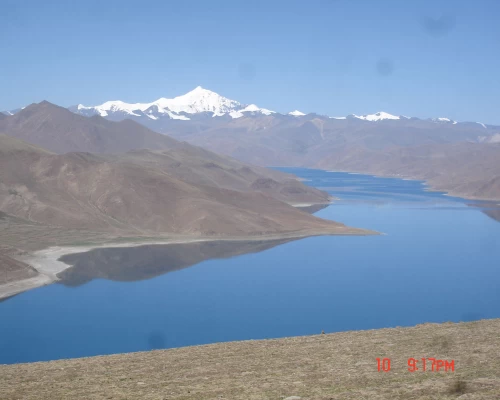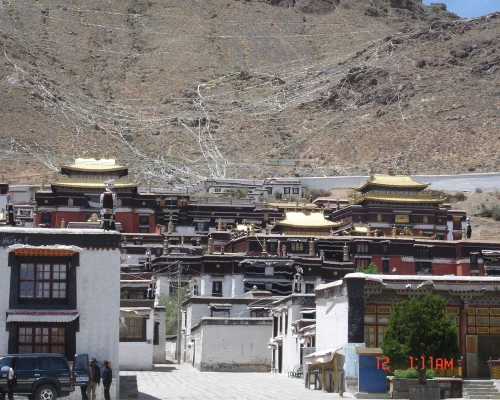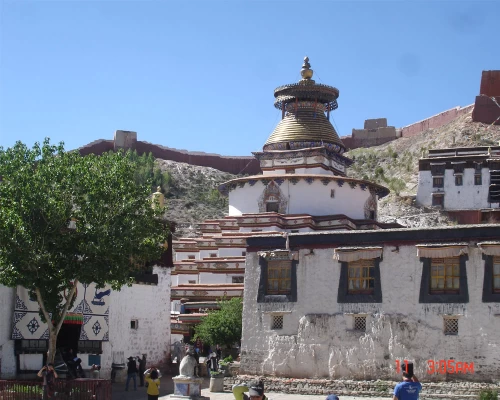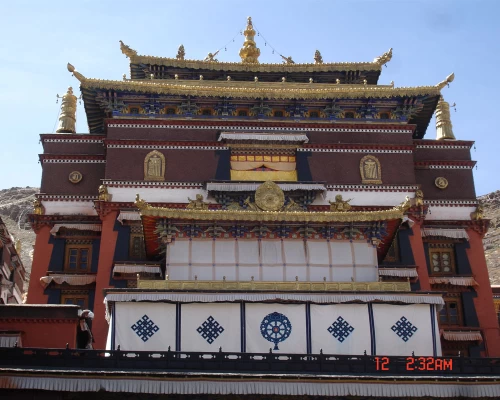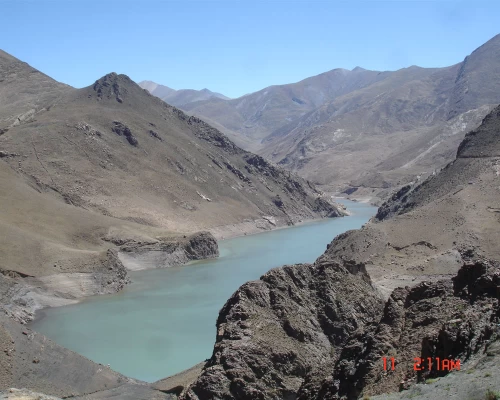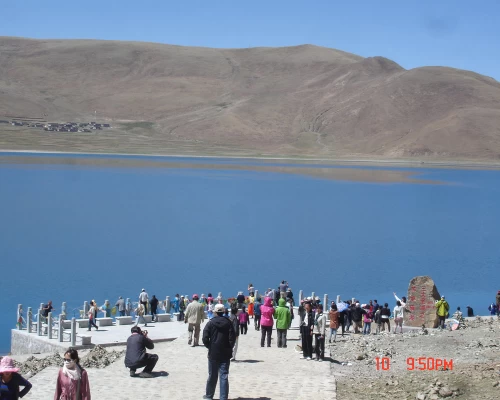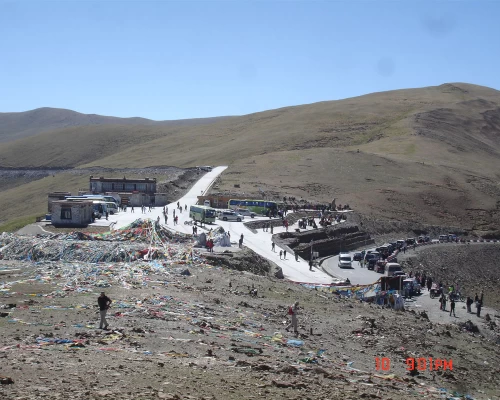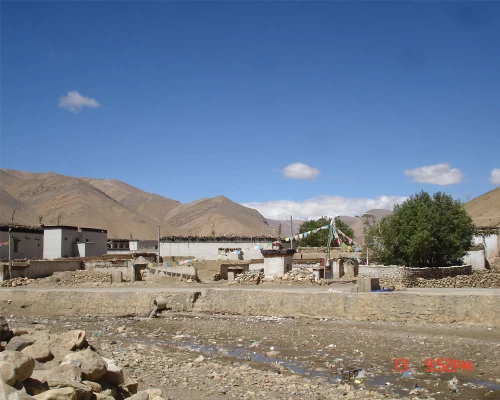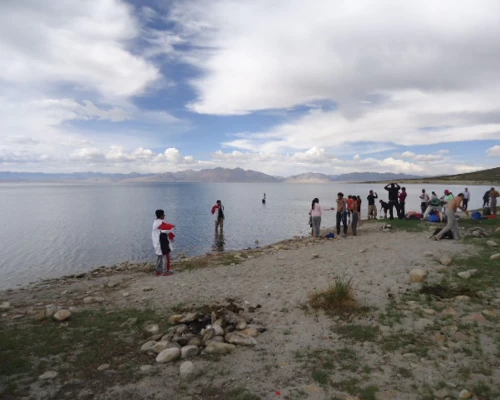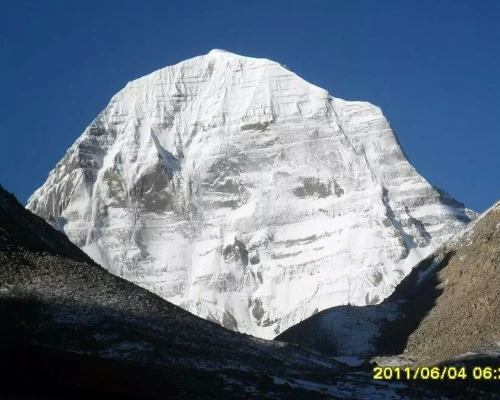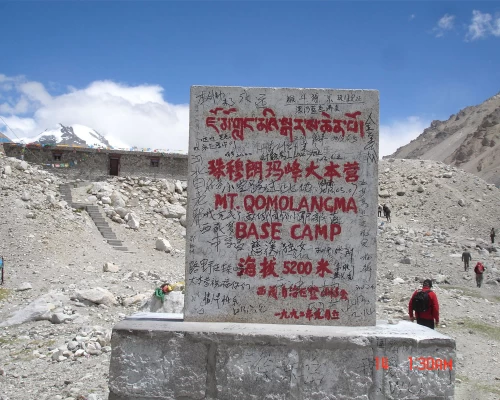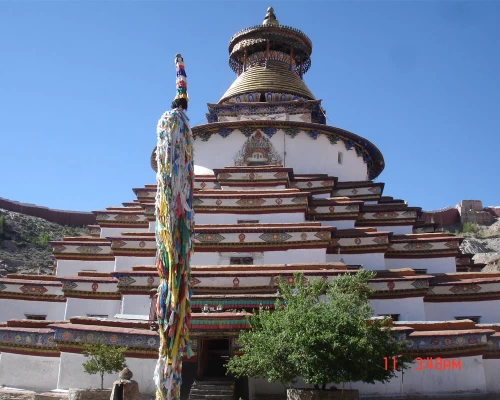Lhasa Kailash Overland Tour with EBC – 20 Days Overview
The Lhasa Kailash Overland Tour with EBC is a 20 days journey across the beautiful and spiritual land of Tibet. This trip combines stunning mountain views, important religious places, and local culture, making it a once-in-a-lifetime experience.
The tour starts in Kathmandu, Nepal. You will visit famous places like Pashupatinath Temple, Swayambhunath (Monkey Temple), and Bhaktapur Durbar Square. Before you head into Tibet, these spots give you a taste of Nepal’s history and culture.
After crossing the border at Kerung, the journey continues through high mountain towns like Shigatse, Gyantse, and Tingri. These towns are full of Tibetan culture, old monasteries, and beautiful landscapes with prayer flags flying in the wind.
In Lhasa, the spiritual heart of Tibet, you will explore the Potala Palace, the Jokhang Temple, and walk around the holy Barkhor Street. The peaceful and spiritual feeling of this city will stay with you.
Next, you will travel west toward two famous lakes, Yamdrok Tso and Lake Mansarovar. These lakes are known for their natural beauty and spiritual importance. Many people believe the water has the power to cleanse your soul.
At Rongbuk Monastery, near Mount Everest, you will see the north face of the world’s tallest mountain, a rare and amazing view. From there, the journey continues to Mount Kailash, one of the most sacred mountains in the world.
Here, you will join other pilgrims to walk the Kailash Kora, a 52-kilometer trail around the mountain. This three-day trek includes crossing Dolma La Pass (5,634 meters), a tough but meaningful part of the journey. People believe this walk helps to wash away past sins and brings peace and blessings.
After finishing the Kora, the trip returns to the same towns and ends in Kathmandu.
What Is the Lhasa Kailash Overland Tour with EBC?
The Lhasa Kailash Overland Tour is a 20 days guided journey that starts in Kathmandu, Nepal, and travels overland into Tibet, combining visits to Lhasa, Everest Base Camp (North face), and Mount Kailash. It is one of the most complete spiritual and cultural tours across the Tibetan Plateau.
The tour includes:
- A cultural introduction in Kathmandu before entering Tibet via the Kerung border.
- Exploration of Lhasa’s key spiritual landmarks such as the Potala Palace, Jokhang Temple, and Barkhor Street.
- Travel through important Tibetan towns like Shigatse, Gyantse, and Tingri, showcasing traditional Tibetan lifestyle.
- A rare view of Mount Everest’s north face from Rongbuk Monastery.
- A visit to sacred lakes, Yamdrok Tso and Lake Mansarovar.
- A 3-day Kailash Kora (52 km pilgrimage walk) around Mount Kailash, including the challenging Dolma La Pass (5,634m).
This tour blends cultural sightseeing with spiritual pilgrimage and is ideal for travelers seeking deep cultural experiences, high Himalayan landscapes, and sacred exploration.
Why This Overland Route Stands Out from Standard Kailash Yatra or Everest Treks
The Lhasa Kailash Overland Tour with Everest Base Camp stands out because it brings together three major highlights in one trip. You get to explore Lhasa, see Mount Everest from the north side, and walk the sacred path around Mount Kailash. Most regular itineraries only cover one of these places.
In a typical Kailash Mansarovar Yatra, you usually miss out on Lhasa and Everest. This overland route gives you time to explore the spiritual heart of Tibet, visit holy lakes like Yamdrok Tso and Lake Mansarovar, and gradually adjust to high altitude, which makes the Kailash Kora easier to handle.
While the Everest Base Camp trek focuses on reaching base camp through Nepal, it does not include the spiritual depth of Mount Kailash or the holy waters of Lake Mansarovar. This route offers more than just a mountain view. It gives you a mix of adventure, culture, and spiritual connection.
Since you travel overland across the Tibetan plateau, you get to see a wide range of landscapes and local life along the way. From busy city streets to quiet monasteries, this tour gives you a complete experience of Tibet.
How Difficult Is the Lhasa Kailash Overland Tour with EBC?
The Lhasa Kailash Overland Tour with EBC is a moderate to challenging trip because of the high altitude and the long travel days. Most of the journey is done by road, so it doesn’t require technical climbing or intense trekking. However, you will be traveling across high mountain terrain, often above 4,000 meters, and doing the Kailash Kora trek, which is the most physically demanding part.
The Kailash Kora is a 52 km walk over three days, including a steep climb to Dolma La Pass at 5,634 meters. The altitude can make breathing harder and walking feel more tiring. You will be walking for 5 to 8 hours each day during the Kora.
You don’t need to be an athlete, but a basic level of fitness is important. Regular walking, light hiking, or cardio training before the trip can help a lot. Being mentally prepared for high-altitude travel is also important.
Highest Altitudes on the Lhasa Kailash Overland Route
The Lhasa Kailash Overland Tour with Everest Base Camp takes you to several high-altitude locations across Tibet. Here are the key elevation points during the journey:
Khamba La Pass (5,200m)
This is one of the first high passes you’ll cross after leaving Lhasa. It offers stunning views of Yamdrok Tso Lake and surrounding peaks.Everest Base Camp (North Face) – 5,200m
Located near Rongbuk Monastery, this is the highest point from where you can view Mount Everest up close on the Tibetan side.Lake Mansarovar (4,590m)
A sacred lake near Mount Kailash, considered holy by many religions. It’s one of the highest freshwater lakes in the world.Dirapuk (Kailash North Face Base Camp) – 4,900m
This is where the first day of the Kailash Kora ends. You’ll get a close view of the north face of Mount Kailash.Dolma La Pass (5,634m)
This is the highest point of the entire tour and the most challenging part of the Kailash Kora. The climb is steep and requires slow, steady walking.
These high-altitude spots are spread throughout the trip to help you acclimatize gradually. With proper rest and hydration, most travelers can manage these elevations well.
Best Time to Do the Lhasa Kailash Overland Tour with EBC
The best time to do the Lhasa Kailash Overland Tour with EBC is from May to mid-October. During these months, the weather is more stable, the skies are clearer, and the mountain views are at their best.
May to June
This is one of the best times for the tour. The temperatures are mild, the air is dry, and the roads are in good condition. The trails and sites are not too crowded yet, making it a comfortable time to travel.July to August
These months are the monsoon season in Nepal, but Tibet receives much less rain. You can still do the tour, though there might be occasional showers and cloudy skies. It’s also the time of the Saga Dawa Festival, a major spiritual event at Mount Kailash that draws many pilgrims.September to mid-October
Another great time to travel. The weather is crisp and clear after the summer rains. Views of Everest and Kailash are excellent, and the number of tourists starts to go down, offering a quieter experience.
Winter months (November to April) are not recommended due to extreme cold, heavy snow in some areas, and possible road closures.

